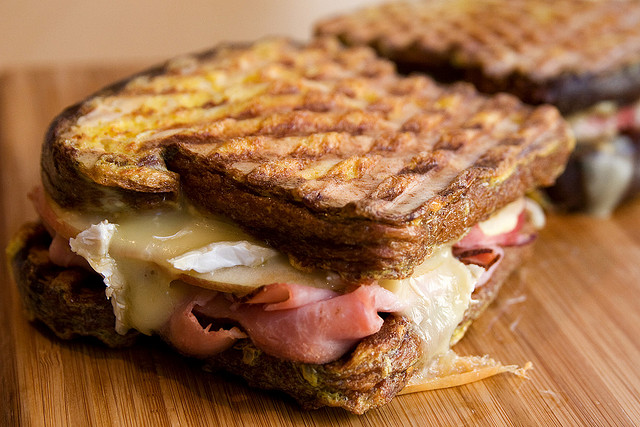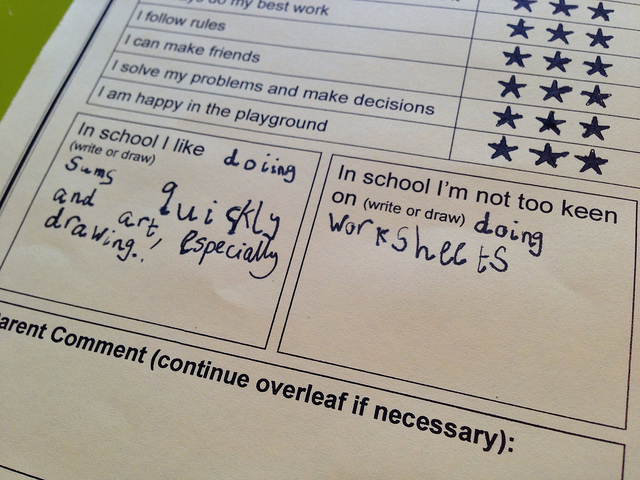Lessons
Learning is a journey, and your students want to know you are with them. How do you let them know you truly are? In my experience, this is done by creating learning experiences that mean something. Experiences that live in real space. Experiences designed to be seen by more eyes than yours as the teacher. What do the other students think about the issue? What about experts in the field? I am a longtime proponent of designing lessons that do not live on the page alone. And yet, I also understand that every lesson on every day cannot possibly live such a contextualized life. There are skills to be learned. Basic facts to comprehend.
And yet, even these basic facts and skills can be presented in such a way that they feel intended for the learner alone. Customized. Toasted. A recent post by Seth Godin posited the value of things being “toasted.” In this brief post, he defines “toasted” as this:
“Here’s a little treat, something extra I did that wasn’t necessary, for you, right now, here, I made this.”
He’s right. As a fan of good food, I can honestly say that whether via restaurant chef or home-made, anything toasted carries with it that extra bit of “just for you” at that very moment. This can apply to every single experience in the classroom. But first, what might be the alternate view? McDonald’s burgers? Textbook-company-created worksheets? Lesson 3.1.1?
I remember many of my first experiences as a teacher back in 1993 as clear as if they happened yesterday. Back then I was handed a textbook and a course title. “Biology” is a really vague direction without articulated standards and learning targets to define the scope. I must state that my district had actually produced a curriculum charting the path more than others. However, it would be some years before strong instructional leadership helped to not only define the K-12 pathway, but also to align it with local assessment to check progress along the way. Prior to that time, my colleagues generally marched forward along a path prescribed by the textbook company we had adopted. And this… this led to stepwise assigning of tasks, number by number until the end of May. Students catch on to this. And they catch on quickly.
Reality
It is here that I must say unequivocally that the job of a teacher – 100+ students of all abilities, defined time spans, the sum total of the “school experience,” etc. – is massive. I know the depth of that reality because I lived it for 25 years. I lived it in both face to face and blended environments. I lived it as a teacher, and later as a school instructional coach, a district instructional technology specialist, and a district instructional coordinator. I know the time it takes to design a solid lesson. Luckily, I did this for many years prior to the national standards movement, as well as for many years under such external pressures.
One thing I can honestly say I learned in year one: never photocopy a blackline master worksheet. No matter how well constructed or designed. Even prior to the equalizer we now know as the dawn of the Internet, students could easily see through the McDonalds-like automation of the worksheet. If they were asked to complete a task on paper for me… it was designed by me. It was designed by me, and customized directly for them… and I made sure in construction that they would know it.
Forward
Today we know far better. We have long lived in a world where media is created by anyone and everyone. Students know when you are creating a task specifically for them, and they appreciate it. The appreciate it by responding to a level we desire because they buy in to reality far more than into a false construct. Fast forward to today… where I lead a virtual school of 19 teachers offering a total of 34 courses to a district of nearly 20,000 students and many more in the region we serve. And so, I ask the simple question: to teachers near and far: how toasted are your offerings for your students? How do you put those dark delightful grill marks onto your designs for learning?
Artwork thanks
*Robyn Lee for “Ham, Brie and Apple French Toast Panini” via CC on Flickr
*Ewan McIntosh for “She’s not so keen on worksheets – quite right!” via CC on Flickr


I was excited to come across you blogging again! Great thoughts here.
Thanks, Laura! Glad you found it. I hope all is well for you up there. Chromebooks now?
Glad Catriona’s picture is of use in this context. Good post!
Hi,
As a student teacher trying to figure out constructivist teaching, I loved the way that you think about “toasting” your lessons. This is something that I struggle with especially at a school where we share common assessments and have so many kids at varying levels of knowledge. This can be so challenging but I want to be able to do this and do it well for my kids. As a budding biology teacher, I want my kids to understand what being a scientist means to them, not just the content area facts. This means giving them the opportunities to explore. I’m always up for suggestions because sometimes I have no idea where to start. I appreciated you putting the things that I am learning about into layman’s terms. It will help me get some ideas on how to explain what I am learning to others and why it is so important.
Thanks!
I really liked the “toasting” analogy! I hadn’t actually thought of it in that way. I tend to have a problem with using premade teaching materials, or even someone else’s stuff. It just doesn’t feel right. Even if I was given a bunch of lecture slides and told to just teach these, I’d still want to rewrite and redo them myself because I’d rather teach with something I made myself.
One personalizing touch I’ve seen some other teachers do was use their students’ names as the characters in math problems, although I can see that being distracting just as much as engaging…
I hadn’t thought of it that way either, Emile. And I agree: I nearly always… and I mean always reworked found resources. I can’t say enough about the subtle value of that. (sorry for the late reply- this comment somehow got caught up in the system) Thanks for stopping by!
Emile, I agree with the discomfort of “stealing” others’ work and simply passing it along to my students un-tailored. I am currently in a pre-service program, student teaching after subbing for 3 years and the current theme is “don’t reinvent the wheel – borrow when you can”. Although I am a huge fan of efficiency, I would also “toast” borrowed lessons and activities for my students each year. I’m already using this great resource called “the internet” to find as many ideas as possible, then modifying for my class and student needs. I hope you’ve come up with your own method for using others’ materials!
Hello!
As a prospective science educator recently introduced to the constructivist method of teaching, I think the ideas presented in this blog post serve to reinforce the importance of differentiation that instructors should consider during the planning process if they are to effectively employ this type of pedagogy. In trying to engage students with the content material, it makes sense that this would entail a personalized or “toasty” curriculum to build on students unique interests. You make mention about students ability to notice when these activities are not toasty, and I was curious with the ways in which students have demonstrated this understanding. Having recently implemented some toasty lessons of my own, it seems that although a slight percentage of students may be more engaged, their reaction to less toasty lessons are pretty much identical. Given your vast experience within the realm of education, I was wondering if there were specific ways you used to gauge when dealing with similar circumstances?
Thanks!
Hello, Jessie. You ripped a page straight from my playbook here. Asking “how do you know?” regarding anything that we assume takes place within the classroom is a core coaching strategy. No matter what you do, find someone who can and will do this for you. Never underestimate the value of a trusted colleague you can plan with, share feedback with, and openly question one another on a regular basis. There is probably nothing that will produce more professional growth than that.
So, that said… I can’t really give you much of a concrete reply on how I initially assessed that this was better. To be perfectly honest, when you start out by authoring your own things or significantly editing/polishing borrowed things, you don’t have much of a controlled “experiment.” Today? I see it all of the time in the form of direct student feedback to my staff. I would say this concept matters even more in a fully online class. When you cannot tap a student on the shoulder and have a one to one conversation in physical space, all of the little “extra” details and customizations really matter. They help to “humanize” the experience of online learning. I have a handful of teachers who really go the extra mile in creating fun and creative little video clips from where they are and what they are doing. The direct video feedback they provide to individual students is over the top. Our students see these teachers as the caring humans they are and they gush about it in course evaluations. High school students will be quite honest about the value of you going the extra mile (or not).
As I mention direct one-on-one feedback, it takes me back to your mention of “differentiation.” To be honest, that word carries a great deal more with it than the customizations I was trying to highlight in this little essay. I’m glad this post made you think of that in the design process. Of course, there is far more to designing learning experiences that allow students to enter no matter their prior knowledge, their strengths and weaknesses, and their interests. Designing experiences that allow all students to not only find appropriate entry points, but also to help each of them find challenge and growth… that’s far more than “toasting” the sandwich. That is more about altering the core recipe of the dish in the first place. Glad you’re already thinking that way. Cheers, and have a great holiday time. Thanks for stopping by to share!